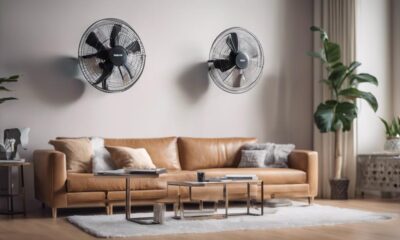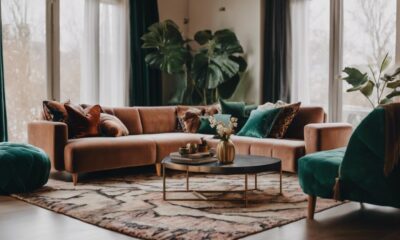Lifestyle
Crafty Creations: How to Make DIY Home Decor That Impresses!
Join the world of crafting as we uncover the secrets to creating stunning DIY home decor that will leave your guests in awe!
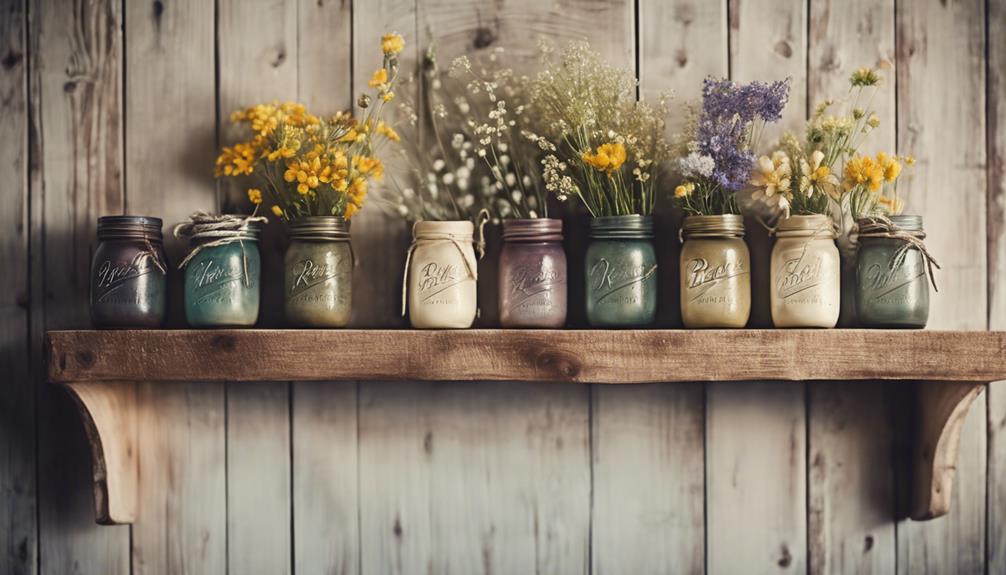
Create impressive DIY home decor with techniques like foam pumpkin and mason jar decor. Customize wooden plaque signs with wax and designs. Experiment with fabric and wood for cozy fall crafts. Personalize fall decor using chipboard phrases. Get essential supplies like chalk paint and tools for crafting. Achieve vintage looks with chalk paint techniques. Use layering and chalk couture for stunning designs. Add rustic touches with wooden elements. Create a cozy fall ambiance with various crafting ideas. Start crafting now to make your home decor stand out and impress your guests with personalized touches.
Key Takeaways
- Customize foam pumpkins with vintage elements for impressive decor.
- Use chalk paint, wax, and transfers for a weathered, vintage look.
- Incorporate fabric-wrapped wooden signs and felt florals for a cozy feel.
- Personalize decor with chipboard phrases and rustic wooden elements.
- Create depth with layering techniques and precise designs using Chalk Couture.
Foam Pumpkin and Mason Jar Decor
For crafting enthusiasts looking to add a touch of charm to their home decor, consider using a foam pumpkin as a versatile base for creative projects. These foam pumpkins serve as a perfect canvas for your DIY endeavors.
You can customize them with fabric, ribbon, flowers, or any decorative elements that suit your style. To achieve a vintage aesthetic, try using chalk paint and wax on your foam pumpkin decorations.
Adding hangers or twine to your finished creations allows for flexible display options around your home.
Wooden Plaque Sign Techniques
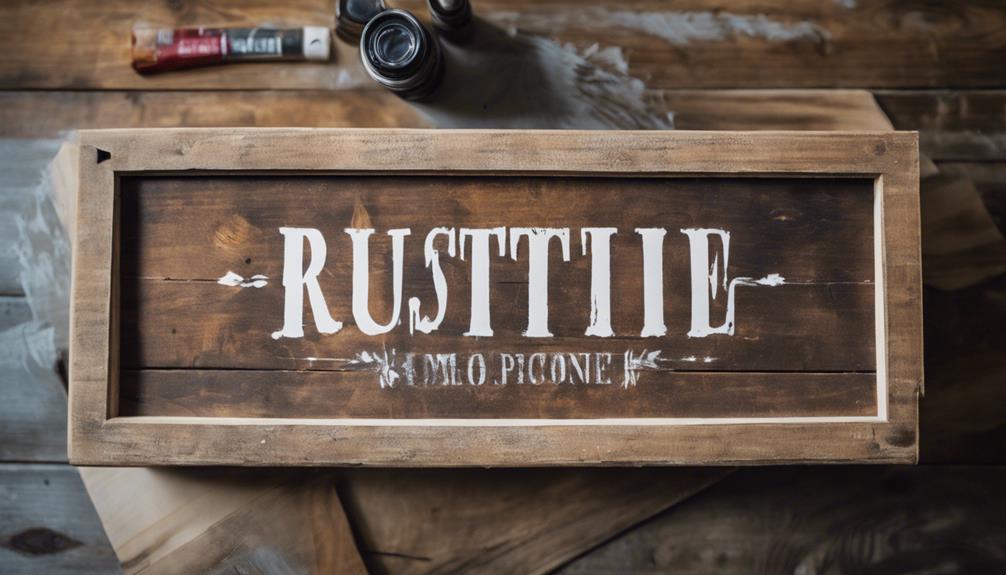
When creating wooden plaque signs, remember to apply surface wax before using transfers for intricate designs.
Joining Chalk Couture can provide you with exclusive designs and discounts for your projects.
Enhance your signs with wheat picks and burlap bows for a personalized touch.
Surface Wax Application
To achieve a professional and protective finish on your wooden plaque signs, consider mastering the techniques of surface wax application.
Surface wax application on wooden plaque signs offers several benefits:
- Enhanced Protection: Surface wax helps create a durable finish that shields the wood from damage caused by moisture or scratches.
- Improved Aesthetics: It enhances the natural beauty of the wood, providing a smooth, matte texture that adds a touch of elegance to your DIY projects.
- Sealing Properties: By sealing the wood, surface wax helps maintain the integrity of the material over time.
- Professional Touch: Utilizing surface wax application techniques can elevate the overall look of your wooden plaque signs, giving them a polished and professional appearance.
Remember that different waxes and techniques may yield varying results, so feel free to experiment to find the best approach for your specific project.
Design Transfer Tips
Begin by incorporating complex designs onto your wooden plaque signs using Chalk Couture transfers for a professional touch. These design transfer tips can elevate your DIY home decor projects.
Start by ensuring your wooden plaque is surface waxed before applying the design transfer. This step is essential as it helps the transfer adhere better to the surface, ensuring a clean and crisp design.
By becoming a Chalk Couture designer, you can access exclusive designs and enjoy discounts, making your creations even more unique.
To enhance your wooden plaque sign further, consider adding decorative elements such as wheat picks and burlap bows. These additional touches can complement the transferred design and give your home decor a polished look.
Fabric and Wood Fall Crafts
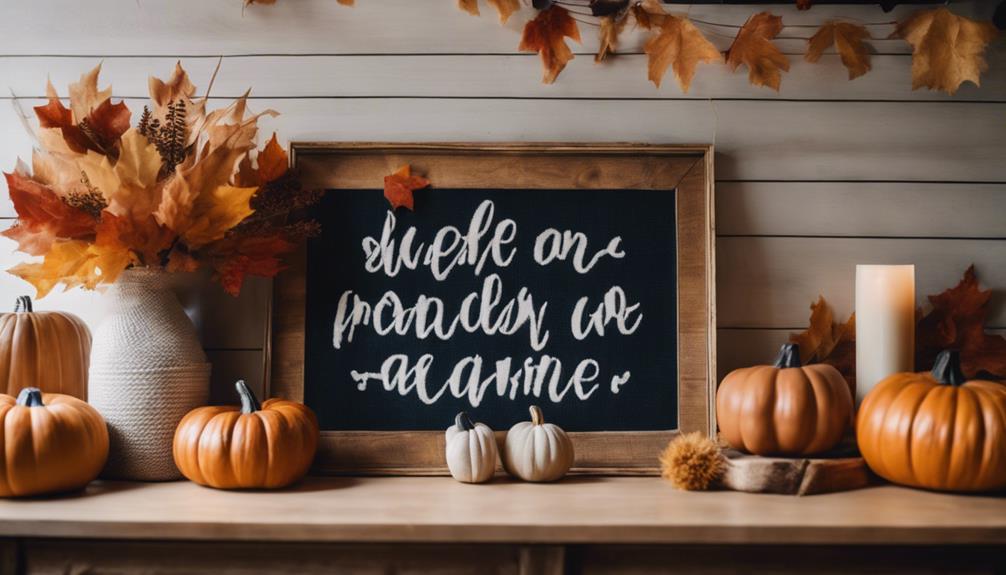
Get ready to amp up your fall decor with fabric-wrapped wooden signs. These crafts will add a cozy and rustic vibe to your home, perfect for the autumn season.
Chalk-painted wood decor is another great option to consider. Customize colors and textures to match your style and make your space uniquely yours.
Lastly, don't forget to incorporate felt floral designs into your fall decorations. These charming accents will bring a touch of nature indoors and enhance the cozy atmosphere of your home.
Fabric-Wrapped Wooden Signs
Embellish your fall decor with charming fabric-wrapped wooden signs, adding a touch of warmth and creativity to your home.
Using Mod Podge, you can easily create textured and colorful designs that capture the essence of the season.
Experiment with different fabrics, patterns, and colors to craft a personalized and seasonal look that suits your style.
To take your creations to the next level, consider adding embellishments like felt flowers, rope accents, or burlap bows for an extra touch of charm.
For a rustic and vintage feel, try distressing the wood and fabric with sandpaper.
Once your fabric-wrapped wooden signs are complete, display them proudly on mantels, walls, or shelves to infuse your living space with a cozy and inviting atmosphere.
Let your creativity shine and transform your home decor with these delightful DIY creations!
Chalk-Painted Wood Decor
Transform your wooden decor pieces with the rustic charm of chalk paint to create enchanting fall crafts that exude a vintage allure. Chalk paint offers a versatile way to revamp your home decor, providing a matte finish that lends a cozy and aged look to your wooden items.
By applying chalk paint to wood, you can achieve a shabby-chic aesthetic that resonates with the warm tones of the fall season. Experiment with different shades of chalk paint to match your existing decor or to introduce a pop of color to your space.
Whether you're painting wooden signs, trays, or picture frames, chalk paint can elevate the overall appeal of your fall crafts. The matte texture of chalk paint adds depth and character to your wooden decor pieces, creating a stunning visual contrast.
Embrace the beauty of imperfections as chalk paint naturally distresses over time, further enhancing the vintage charm of your creations. Fuel your creativity with chalk-painted wood decor and infuse your home with a touch of autumn sophistication.
Felt Floral Designs
Enhance your fall decor with intricate felt floral designs incorporating colorful felt fabric and wooden bases. Creating these charming pieces is a fun and rewarding craft project that will add a cozy touch to your home.
Follow these steps to make your own felt floral designs:
- Cut Out Petals and Leaves: Start by cutting out petals and leaves from colorful felt fabric to use in building your flowers.
- Layer and Arrange: Layer the felt pieces to craft beautiful flower arrangements on wooden sign bases or other craft surfaces.
- Secure with Hot Glue: Use hot glue to securely attach the felt flowers and leaves to the wooden base for a durable finish.
- Experiment with Designs: Get creative by experimenting with different flower shapes, sizes, and colors to achieve a custom and eye-catching design.
These felt floral designs are perfect for adding a touch of fall to your seasonal displays.
Chipboard Fall Phrases DIY

You can easily personalize your fall decor by incorporating chipboard fall phrases into your DIY projects. Chipboard fall phrases are pre-cut designs crafted from sturdy chipboard material, featuring popular fall-themed words like 'harvest,' 'thankful,' 'pumpkin,' and 'autumn.'
These versatile phrases can be painted, decorated, or embellished to match any home decor style or color scheme, making them a perfect addition to your seasonal crafting. Whether you're creating wreaths, signs, banners, table centerpieces, or other decorations, chipboard fall phrases can add a festive touch to your home with ease.
Their ease of use and ability to be customized make them a fun and creative element for your fall DIY projects. So, grab some chipboard fall phrases, let your imagination run wild, and elevate your home decor for the autumn season in a unique and charming way.
Crafting Supplies and Tools
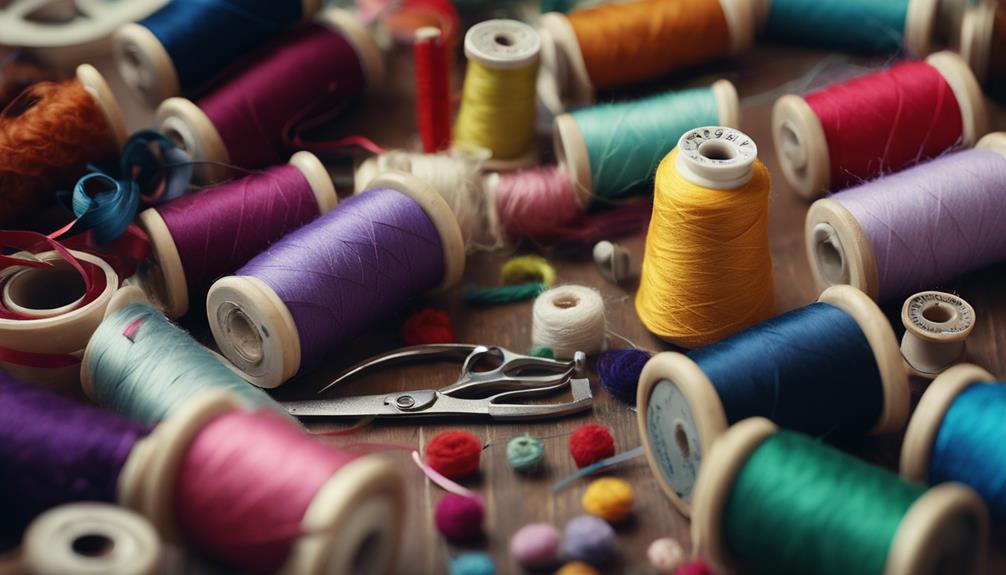
To bring your DIY home decor projects to life, make sure you have the necessary crafting supplies and tools readily available. Here are some essential items you'll need for your DIY projects:
- Crafting Supplies:
- Chalk Paint
- Wax
- Chalk Paste
- Transfers
- Tools:
- Hot Glue Gun
- Scissors
- Brushes
- Materials for Enhancement:
- Cutting Boards
- Fabric
- Signs
- Rope
- Trim
- Mod Podge
- Wood Filler
- Where to Find Supplies:
- Hobby Lobby
- Dollar Tree
- Amazon
- Target
Having these supplies and tools at your disposal won't only make your DIY home decor projects more manageable but also increase their chances of turning out beautifully. Remember, the right materials and tools can make a significant difference in the success of your crafting endeavors.
Vintage Chalk Paint Techniques
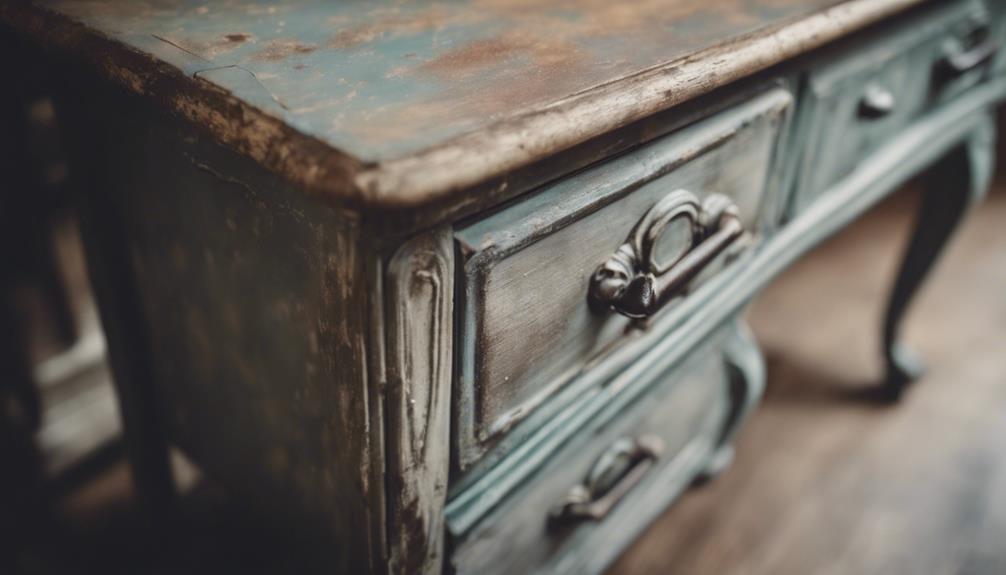
For achieving a weathered and vintage look in your DIY home decor projects, mastering vintage chalk paint techniques is essential. Vintage chalk paint techniques involve distressing and aging surfaces to achieve a weathered appearance.
Start by applying a base coat of chalk paint, then use sandpaper to distress the surface, giving it a worn look. To enhance details and create an antique effect, consider using dark wax as a final touch.
Experiment with layering different colors of chalk paint and distressing techniques to achieve a unique vintage finish that adds character to your furniture and decor pieces.
By incorporating vintage chalk paint techniques into your projects, you can transform ordinary items into stylish, aged pieces that stand out in your home.
Embrace the art of distressing and aging with chalk paint to create beautiful vintage-inspired decor that showcases your creativity and craftsmanship.
Personalized Floral Designs
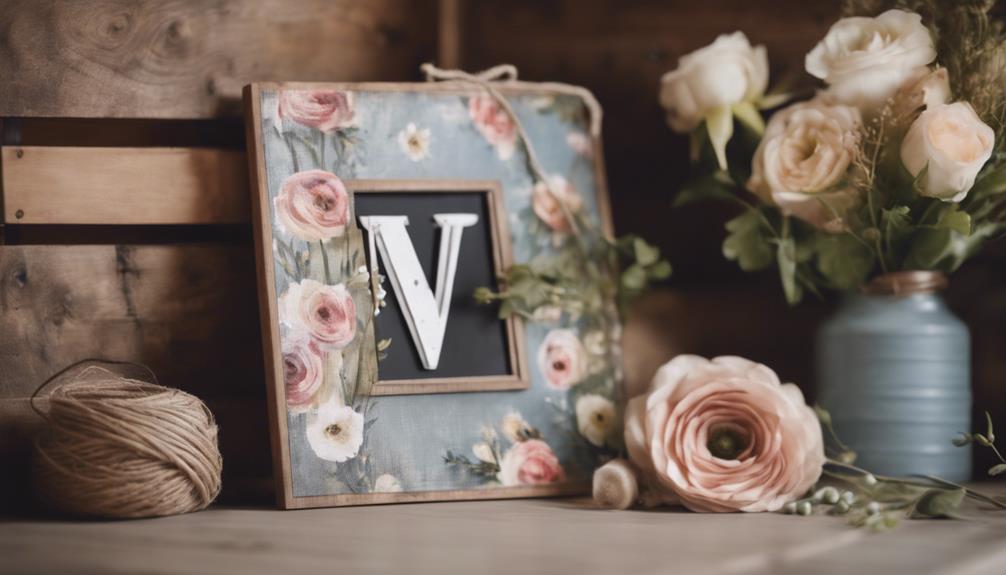
Get ready to unleash your creativity with personalized floral designs! Experiment with fabric petal bouquets and unique rope flowers to add a one-of-a-kind touch to your home decor.
Combine different textures and colors to craft intricate floral patterns that reflect your style and personality.
Fabric Petal Bouquets
Craft personalized floral designs using fabric petals to create a one-of-a-kind bouquet that complements your home decor. When making fabric petal bouquets, consider these tips:
- Select a Variety of Fabric Textures:
Choose different fabric textures like silk, satin, or cotton to add depth and visual interest to your bouquet.
- Play with Colors:
Experiment with an array of colors to match your existing decor or create a bold statement piece.
- Combine with Rope or Twine:
Incorporate rope or twine into your bouquet for a rustic touch that enhances the overall look.
- Customize Bouquet Size and Shape:
Tailor the size and shape of your fabric petal bouquet to suit the space where you plan to display it, ensuring it fits seamlessly into your home decor style.
Fabric petal bouquets offer a versatile and durable alternative to traditional floral arrangements, perfect for showcasing year-round.
Unique Rope Flowers
Enhance your home decor with personalized floral designs using unique rope flowers. By twisting and shaping rope into desired petal shapes, you can create a rustic and charming addition to your DIY home decor.
Combining different colors and thicknesses of rope adds depth and texture to your arrangements, making them stand out. Rope flowers offer versatility, perfect for embellishing wreaths, vases, or even as standalone decorations throughout your home.
Experimenting with various techniques and styles allows you to craft a wide array of rope flower designs, ensuring each piece of your DIY home decor is truly one-of-a-kind. Whether you prefer a minimalist look or a more intricate design, rope flowers can be tailored to suit your aesthetic preferences.
Chalk Couture Design Tips

For effective Chalk Couture designs, consider incorporating various layering techniques to add depth and dimension to your creations.
Chalk Couture offers reusable adhesive silkscreen transfers that allow for precise designs on surfaces like wood, fabric, and glass.
Here are some tips to enhance your Chalk Couture designs:
- Experiment with different color combinations to create stunning visual effects.
- Utilize varying pressure when applying chalk paste or ink to achieve a textured look.
- Mix and match different Chalk Couture transfers to personalize your designs further.
- Embrace imperfections and smudges as they can add character and uniqueness to your creations.
Rustic Wooden Elements
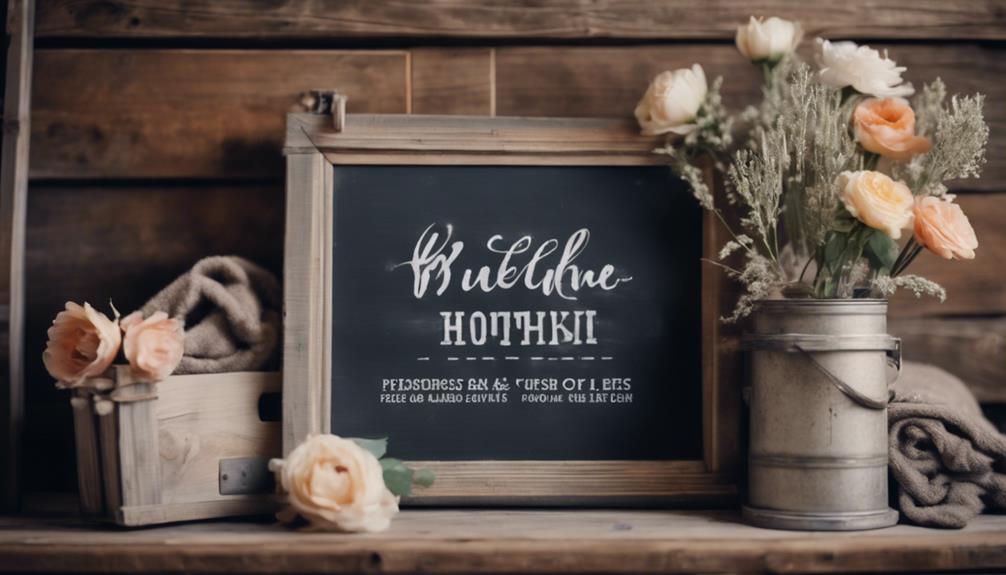
Create charming rustic home decor pieces by incorporating wooden elements like plaques, signs, and pumpkins for a vintage touch.
To achieve a weathered look, consider using chalk paint, wax, and transfers on your wooden pieces.
Enhance the rustic vibe by adding decorative accents such as burlap bows, wheat picks, and rope.
Personalize your creations by customizing wooden elements with Mod Podge and fabric, giving them a unique flair.
For an extra touch of creativity, try incorporating chipboard phrases and scrapbook paper to complement the rustic wood in your DIY projects.
This combination of materials will help you achieve a cozy, vintage feel in your home decor.
Experiment with different techniques and textures to make your rustic wooden elements stand out and impress your guests with your crafty creations.
Cozy Fall Ambiance Ideas

To create a cozy fall ambiance in your home, consider incorporating DIY pumpkin decorations using foam pumpkins, fabric, and LED candles. These elements will add warmth and a touch of autumn to your living space. Here are some ideas to help you achieve that cozy atmosphere:
- Wooden Plaque and Sign Crafts: Combine wax, transfers, and decorative elements like burlap bows to create a warm and inviting feel.
- Fall-Themed Fabric and Wood Crafts: Utilize materials such as Mod Podge and chalk paint to infuse a rustic charm into your decor.
- Chipboard and Round Sign DIYs: Craft charming fall decorations using scrapbook paper, mesh ribbon, and hot glue for a delightful touch.
- Crafting Supplies: Stock up on essentials like chalk paint, Mod Podge, and rope to personalize your DIY creations and enhance your home's cozy fall ambiance.
Frequently Asked Questions
How to Decorate Room With Simple Things Handmade?
Decorate your room with simple handmade items by using fabric pumpkins, wooden signs, or chalkboard accents. Incorporate DIY elements like rope hangers, burlap bows, and floral arrangements for a cozy feel. Mix textures, colors, and patterns for a personalized touch.
How Can I Decorate My Home Diy?
To decorate your home DIY, gather foam pumpkins, mason jars, wooden plaques, fabric, ribbon, chalk paint, wax, felt petals, rope, burlap bows. Explore Chalk Couture for precision. Buy supplies at stores like Hobby Lobby, Dollar Tree, Amazon.
How to Make Simple Handicrafts at Home?
To make simple handicrafts at home, gather basic supplies like glue and scissors. Choose a project like a fabric banner. Follow online tutorials for guidance. Personalize with unique touches. Display proudly for a personal touch.
What Can I Make Crafty?
You can make crafty decorations like foam pumpkins, wooden signs, fabric and wood creations, and chipboard signs. Get supplies from stores like Hobby Lobby or Amazon to start your DIY projects and impress with your home decor!
Conclusion
Now that you've learned how to make impressive DIY home decor, put your crafting skills to the test and create beautiful pieces to showcase in your home. Experiment with different materials and techniques to truly make your decor stand out. When choosing the perfect home decor accessories, consider the overall theme and style of your home. Whether you want to add a pop of color with throw pillows and rugs, or incorporate natural elements like wood and greenery, the right accessories can tie a room together. Don’t be afraid to mix and match different textures and styles to create a unique and personalized look that reflects your personality and taste.
Don't be afraid to get creative and personalize your designs to make them unique to you. Let your imagination run wild and see where it takes you!
Lifestyle
Why Certain Foods Are Linked to Improved Mental Health
Get ready to discover how specific foods can boost your mental health and enhance your mood in ways you never expected.
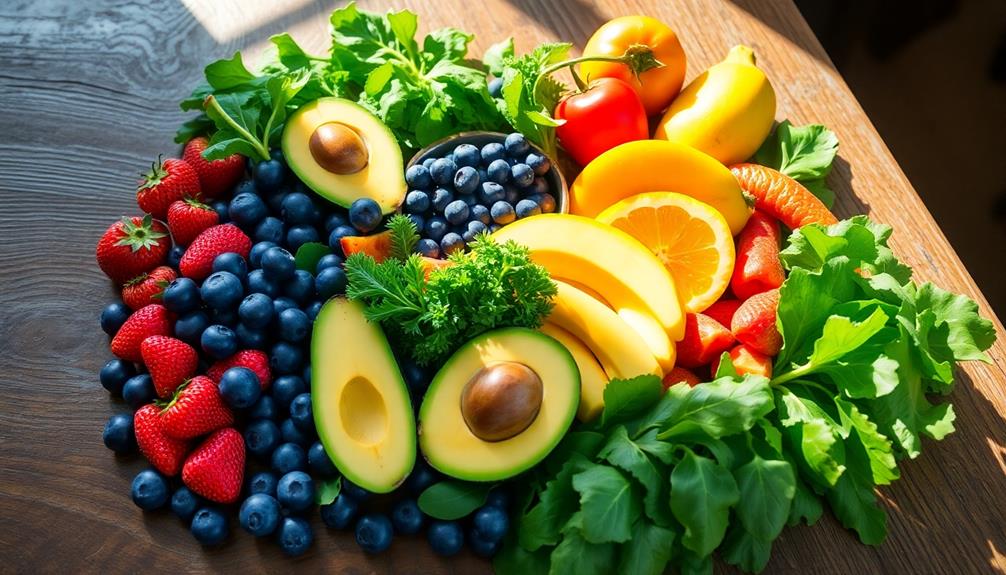
Certain foods are crucial for your mental health, as they enhance mood and cognitive function. Nutrient-rich options, like omega-3 fatty acids found in fish and antioxidants in colorful fruits and vegetables, combat inflammation, which is linked to mood disorders. Diets such as the Mediterranean diet promote anti-inflammatory effects and support gut health, improving emotional regulation. Additionally, key vitamins, like D and magnesium, play essential roles in mood stabilization. By choosing diverse, nutrient-dense foods, you can positively impact your mental well-being. There's much more to explore about how food choices influence your mind and body.
Key Takeaways
- Nutrient-rich foods, such as omega-3 fatty acids, support neurotransmitter function and reduce inflammation, enhancing mood and cognitive function.
- Antioxidants found in colorful fruits and vegetables combat oxidative stress, lowering the risk of depression and supporting mental well-being.
- The Mediterranean diet's anti-inflammatory properties promote better mental health outcomes by reducing chronic inflammation linked to mood disorders.
- Vitamin D deficiency is associated with increased depression risk; foods rich in this nutrient can help regulate mood effectively.
- A diverse diet rich in nutrients supports the gut microbiome, influencing emotional regulation and mental health through the gut-brain connection.
Understanding Nutrition's Impact

Nutrition plays an essential role in your mental health, influencing everything from mood to cognitive function. When you choose nutrient-rich foods like fruits, vegetables, whole grains, and lean proteins, you're supplying your brain with the vitamins and minerals it needs to thrive.
For instance, traditional dishes such as Muamba De Galinha can provide essential nutrients while connecting you to cultural roots. Conversely, diets high in processed foods and refined sugars can lead to inflammation, negatively impacting your brain function and contributing to mood disorders such as depression and anxiety.
One effective way to enhance your mental health is by adopting the Mediterranean diet. This diet emphasizes a high intake of fruits, vegetables, legumes, and healthy fats, all of which promote better mental health outcomes.
Incorporating Omega-3 fatty acids from sources like fatty fish, flaxseeds, and walnuts can further support your brain's neurotransmitter function while reducing inflammation.
You should also focus on consuming a diverse range of colorful fruits and vegetables. These foods are rich in flavonoids and antioxidants, which can lower the risk of depression and support your overall well-being.
Key Nutrients for Mental Health

A balanced diet rich in key nutrients can greatly enhance your mental health. When you incorporate certain nutrients into your meals, you may find a positive shift in your mood and a reduction in depression symptoms. Here's a quick overview of some essential nutrients that promote mental well-being:
| Nutrient | Benefits |
|---|---|
| Omega-3 Fatty Acids | Reduces depression; anti-inflammatory |
| Vitamin D | Regulates mood; deficiency linked to depression |
| Antioxidants | Combats oxidative stress; improves mood |
| Magnesium | Essential for neurotransmitter function; alleviates anxiety |
| Folate | Supports dopamine production; lowers depressive symptoms |
Including Omega-3 fatty acids from fish, walnuts, and flaxseeds can help your brain function better. Vitamin D from sunlight or fortified foods is important for mood regulation. Antioxidants found in colorful fruits and veggies fight oxidative stress and enhance cognitive function. Magnesium, found in nuts and whole grains, plays a significant role in neurotransmitter function, easing anxiety. Finally, folate-rich foods like leafy greens support dopamine production, potentially reducing depression symptoms. By focusing on these nutrients, you're investing in your mental health.
The Role of Diet Patterns
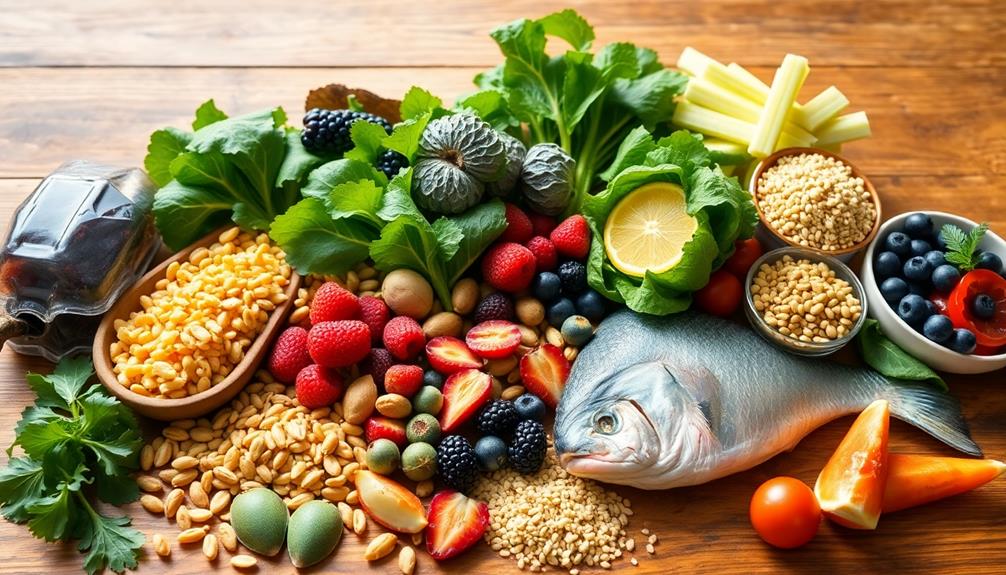
Many people underestimate the impact of overall diet patterns on mental health. Your food choices can greatly influence your mood, cognitive function, and emotional well-being. Following a diet like the Mediterranean diet, which emphasizes fruits, vegetables, whole grains, and healthy fats, can lower your risk of depression.
These foods possess anti-inflammatory properties that help combat inflammation in the body, promoting better mental health outcomes. Additionally, incorporating diverse ingredients like Brazilian seafood dishes can provide essential nutrients that support cognitive function and emotional stability.
Research shows that diets rich in omega-3 fatty acids, found in fish and nuts, are linked to improved cognitive function and reduced anxiety and depression symptoms. In contrast, traditional Western diets high in processed foods, refined sugars, and unhealthy fats can increase inflammation and negatively affect your mood.
By opting for unprocessed foods and reducing your intake of unhealthy fats, you could lower your depression risk by 25%-35%.
Additionally, consuming a diverse array of nutrient-dense foods enhances your gut microbiome, which plays a vital role in the gut-brain connection. A healthy gut can lead to improved emotional regulation and overall mental health, making it clear that the right diet patterns can deeply affect your psychological well-being.
Inflammation and Mood Disorders

Chronic inflammation importantly impacts mental health, contributing to mood disorders like depression and anxiety. Research shows that individuals with higher inflammatory markers are more susceptible to these conditions. This connection highlights the importance of managing inflammation for better mental health.
Incorporating nutritious dishes like Nettle and Potato Soup or Heirloom Bean Stew can provide essential nutrients that combat inflammation and promote well-being.
One effective way to combat inflammation is through diet. The Mediterranean diet, packed with anti-inflammatory foods such as fruits, vegetables, whole grains, and healthy fats, has been linked to a lower risk of developing mood disorders. Incorporating omega-3 fatty acids, found in fish and certain nuts, can greatly alleviate depressive symptoms and enhance overall mental health.
Conversely, high-calorie diets rich in saturated fats and sugars can trigger increased inflammation, which may worsen cognitive function and mood disturbances. It's vital to adopt dietary changes that prioritize anti-inflammatory foods to support your mental well-being.
Moreover, intervention studies reveal that anti-inflammatory medications can reduce symptoms of depression, further underscoring the role of inflammation in mood regulation.
Brain-Gut Connection

Connecting the dots between your gut health and mental well-being reveals a fascinating relationship that greatly affects your mood. The gut microbiota communicates with your brain through neural, inflammatory, and hormonal pathways, highlighting its role in mental health. Approximately 95% of serotonin, an essential neurotransmitter for regulating mood, is produced in your gastrointestinal tract. This connection emphasizes the need to maintain a healthy gut to support emotional stability.
Research links alterations in the gut microbiome with mood disorders, including major depressive disorder. Your dietary patterns considerably influence this microbiome. For instance, the Mediterranean diet fosters beneficial microbial diversity, which can enhance mood and reduce inflammation.
Here's a quick overview of how various factors relate to the brain-gut connection:
| Factor | Impact on Mental Health |
|---|---|
| Gut Microbiota | Influences brain function and mood |
| Serotonin Production | Key in regulating emotional balance |
| Dietary Patterns | Shapes gut health and diversity |
| Inflammation | Linked to mood disorders |
| Mediterranean Diet | Promotes beneficial gut bacteria |
Understanding this connection empowers you to make dietary choices that can positively affect your mental health.
Mindful Eating Practices

When you practice mindful eating, you become more aware of your emotions and how they influence your food choices.
Incorporating traditional dishes such as Red-Braised Pork Belly can enhance your dining experience by offering rich flavors that evoke comfort and nostalgia.
Creating a calming eating environment helps you focus on your meals, reducing distractions that can lead to mindless eating.
Emotional Awareness During Eating
Enhancing your emotional awareness during meals can greatly improve your relationship with food. Mindful eating encourages you to pay full attention to your eating experience, which can markedly boost your emotional awareness. By doing this, you'll find it easier to recognize your hunger and fullness cues, supporting a healthy diet and promoting better food choices.
For instance, enjoying classic Southern dishes like satisfying squash casserole can enhance your mealtime experience, as you savor the flavors and textures involved.
Keeping a food journal is a practical tool that helps you identify emotional triggers that influence your eating habits. This awareness can lead to healthier choices and better psychological wellbeing.
When you take the time to chew slowly and savor each bite, you can truly appreciate the food's taste and texture, enhancing your satisfaction with smaller portions.
Incorporating emotional awareness into your meals allows you to connect with your food on a deeper level. You'll find that this practice transforms your eating habits, making meals more enjoyable and less about mindless consumption.
Calming Eating Environments
Creating a calm eating environment greatly impacts your overall dining experience and mental wellbeing. When you remove distractions like televisions and smartphones, you encourage mindful eating, allowing you to focus on the flavors and textures of your food. This practice can be particularly enhanced by incorporating traditional dishes, such as Khao Niao Sangkhaya, which offers a delightful balance of creamy custard and sticky rice that encourages savoring each bite.
This leads to greater satisfaction and often results in healthier dietary choices, as you become more attuned to your hunger cues.
Designating a specific, pleasant space for meals can notably improve digestion and help cultivate a positive emotional state. By scheduling smaller, more frequent meals in a serene environment, you can regulate your appetite and reduce stress-related eating patterns.
This calm atmosphere not only helps you enjoy your food but also eases emotional states that might otherwise lead to overeating or unhealthy choices.
Keeping a food journal to track your emotional states while eating can reveal triggers that influence your eating behavior. By identifying these patterns, you can make more conscious decisions and foster healthier dietary choices.
Ultimately, creating calming eating environments encourages a mindful approach to meals, enhancing your overall mental health and wellbeing.
Barriers to Healthy Eating

When you try to eat healthier, financial constraints can make it tough to access nutritious foods.
For instance, many people may find it challenging to prepare meals that utilize leftovers, like a delicious turkey soup made from leftover turkey, which can be both comforting and economical.
If you live in a food desert, fresh produce might feel out of reach, impacting your mental health.
Plus, without proper education on nutrition, you might struggle to make informed choices that support your well-being.
Financial Constraints on Nutrition
Many people find that financial constraints can severely limit their access to nutritious foods, making it challenging to maintain a healthy diet. When you're facing economic hardships, you might often turn to cheaper, processed options instead of fresh fruits and vegetables, which are essential for good nutrition and mental health.
For instance, preparing wholesome meals like Mushroom Masala or Gobi Manchurian can be both affordable and nutritious, yet these options may be overlooked in favor of less healthy choices. Research shows that low-income households can spend over 30% of their income on food, leaving little room for healthier choices.
Food insecurity is a significant issue, associated with a 50% higher risk of depression and anxiety. It highlights how limited access to healthy food directly impacts your mental well-being. Transportation challenges and a lack of fresh produce in low-income neighborhoods only worsen the situation.
Furthermore, the psychological stress from financial instability can lead to emotional eating, where you might reach for unhealthy comfort foods. This creates a cycle of poor nutrition and declining mental health, making it even harder to break free from these financial constraints.
Recognizing these barriers is the first step toward finding solutions to improve your access to nutritious food, ultimately enhancing both your nutrition and mental health.
Environmental Access Issues
Access to fresh, nutritious foods is a significant challenge in many low-income neighborhoods, often resulting in food deserts where healthy options are scarce. In Ethiopian cuisine, for example, dishes like Yekolo (Roasted Barley) highlight the use of locally sourced ingredients that can be both healthy and affordable.
You might find it frustrating when financial constraints limit your ability to purchase high-quality, nutrient-rich foods. As a result, you may rely more on cheaper, processed options that don't offer the same mental health benefits.
Transportation barriers can further complicate your ability to reach supermarkets and farmers' markets, making it difficult to obtain fresh produce. Without reliable access, you're more likely to settle for what's nearby, which often includes low-quality food vendors and high-density fast-food outlets.
These environmental factors can severely shape your dietary choices and lead to unhealthy eating habits.
Additionally, the limited availability of nutritional education and resources in your community might prevent you from making informed decisions about your diet. This lack of knowledge can perpetuate unhealthy eating patterns and contribute to poor mental health outcomes.
Mental Health Impact
Although financial constraints can create significant barriers to healthy eating, the impact on mental health is often even more profound. When you struggle to afford nutritious options, it can lead to a reliance on processed and refined foods that don't support your mental well-being.
Incorporating traditional foods like Dorayaki (Red Bean Pancake) or Umeboshi can provide not only delicious alternatives but also essential nutrients that contribute positively to mental health.
Here are three key barriers you might face:
- Food Deserts: Limited access to fresh produce and unprocessed foods can make it nearly impossible to maintain a balanced diet. The lack of options often pushes you towards unhealthy alternatives.
- Psychological Factors: Stress and depression can trigger unhealthy eating habits, causing you to crave high-fat, high-sugar fast foods instead of nutrient-rich meals that can enhance your mood.
- Educational Gaps: If you're not educated about nutrition, making informed choices becomes a challenge. This lack of knowledge can perpetuate cycles of poor dietary habits, further impacting your mental health.
Addressing these barriers is essential for fostering healthy eating habits that promote better mental health.
Future Research Directions
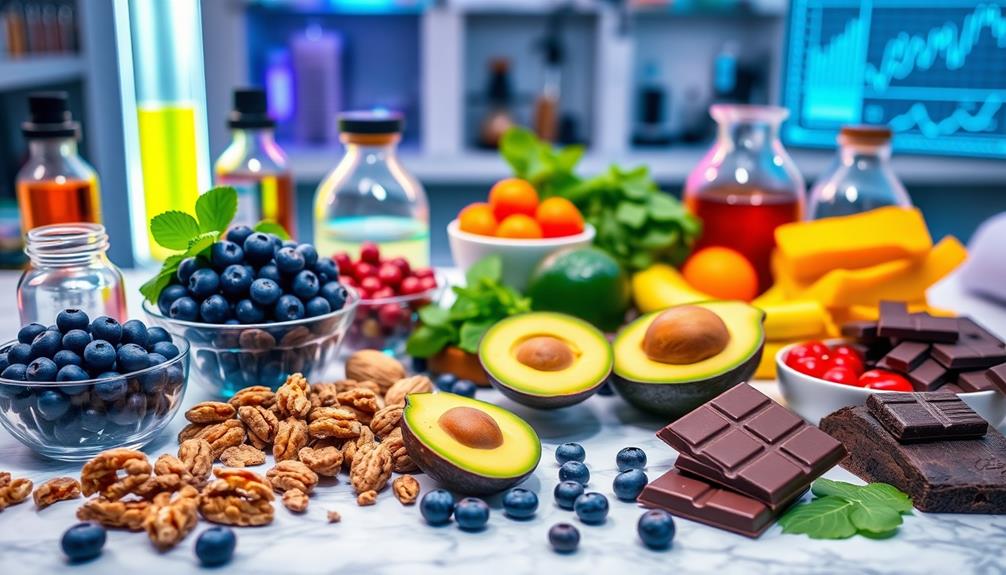
Future research on the link between diet and mental health should prioritize understanding the specific mechanisms at play. For instance, exploring how dietary patterns, like the Mediterranean diet, exert anti-inflammatory effects could be essential in alleviating symptoms of depression and anxiety.
You might discover that the gut-brain axis plays a pivotal role in this relationship. Investigating how changes in gut microbiota from dietary modifications influence mood regulation can deepen your insights into mental health outcomes.
Additionally, larger-scale interventional studies are necessary to establish clear causal links between key nutrients, such as omega-3 fatty acids and polyphenols, and their effects on mental health.
It's equally important to examine food insecurity and access to healthy foods, as these factors shape mental health disparities, particularly in vulnerable populations.
Frequently Asked Questions
How Do Certain Foods Affect Mental Health?
Certain foods impact your mental health by providing essential nutrients that support brain function. Eating nutrient-dense options boosts mood, while processed foods can lead to fluctuations that cause anxiety and depression. Your diet plays a vital role.
What Are 5 Foods to Avoid for Mental Health?
To support your mental health, avoid highly processed snacks, refined sugars, saturated fats, trans fats, and artificial additives. These can disrupt your mood, energy levels, and overall cognitive function, ultimately impacting your emotional well-being.
What Is the Connection Between Food and Psychology?
Food directly affects your psychology by influencing mood and cognition. Nutrient-rich foods boost neurotransmitter production, while unhealthy options can cause inflammation, leading to negative emotional states. Your dietary choices substantially shape your mental well-being.
What Are 5 Ways to Improve Mental Health?
Imagine your mind as a garden; nourish it with vibrant fruits, vegetables, and lean proteins. Practice mindful eating, stay hydrated, maintain balanced meals, and keep a food journal to cultivate flourishing mental health.
Conclusion
Incorporating nutrient-rich foods into your diet is like planting seeds in a garden; with care and attention, you'll cultivate a flourishing mind. By understanding the role of specific nutrients and adopting mindful eating practices, you can nourish both your body and mental well-being. As research continues to uncover the connections between diet and mental health, remember that every meal is an opportunity to nurture your mental landscape and grow towards a brighter, healthier future.
Lifestyle
Dream Job Alert: How to Become a Buyer for Home Decor Brands!
Navigate the world of home decor buying with key skills and benefits – discover how to start your dream career today!

Ready to pursue your dream of becoming a buyer for home decor brands? Essential skills like negotiation, communication, and software proficiency are crucial. Companies provide benefits such as health insurance and opportunities for career growth. Salaries typically range from $44,000 to $80,200 annually. Begin your journey by searching for entry-level positions, internships, or remote options. It is vital to understand market trends and customer preferences in this field. Explore the industry landscape to discover the diverse paths available in this exciting career.
Key Takeaways
- Develop negotiation, communication, and organizational skills.
- Gain experience in fashion retail and purchasing.
- Consider an associate degree in relevant fields.
- Stay updated on home decor market trends.
- Apply for internships and entry-level positions.
Job Position Details
When considering job position details for becoming a Buyer for home decor brands, it's vital to understand the range of roles available and the corresponding salary expectations.
Buyer jobs in the home decor industry can vary from Assistant Buyer positions at retailers like Saks to more senior Merchandise Buyer roles at companies such as Bealls-Inc.
As a home decor buyer, salaries typically range from $44,000 to $80,200 per year, with additional benefits like health insurance and 401(k) plans often included in the compensation package.
To excel in home decor buyer roles, essential skills such as negotiation, communication, and proficiency in software like Microsoft Word and Excel are critical.
Education preferences for home decor buyers may include an associate degree, coupled with experience in fashion retail and purchasing.
Responsibilities for individuals in home decor buyer positions commonly entail vendor selections, product trend analysis, and the delicate balance of meeting customer needs with product offerings.
Company Insights and Benefits

For those considering a career as a buyer for home decor brands, exploring company insights and benefits is essential in making informed decisions. Companies such as Saks and The Container Store offer a range of benefits including health, dental, and vision insurance, as well as opportunities for career advancement.
With employer ratings varying from 2.8 to 3.7, additional perks like 401(k) plans, paid time off, and vision insurance are also available.
Buyer positions in the home decor industry can be found in locations spanning from La Vergne, TN, to New York, NY, and other cities across the United States. Some of the companies actively hiring for buyer roles in this sector include Saks, World Market, Net Health Shops, LLC, The Container Store Inc., and Bealls-Inc.
Detailed job attributes such as benefits, schedules, and location specifics are typically provided for these buyer positions within the home office setting.
Salary and Compensation Overview

Home decor buyer salaries can vary greatly depending on the company and location, ranging from $44,000 to $80,200 per year. These professionals play a pivotal role in selecting products for stores or online platforms, ensuring they align with brand image and customer preferences. Similar jobs in the industry, such as procurement specialists in home furnishings, offer salaries averaging between $90,000 and $100,000 annually.
Associate buyer positions, another common role, typically provide compensation ranging from $48,100 to $74,300 per year. Compensation packages for home decor buyers often include benefits like health insurance and 401(k) plans. Salaries in this field are competitive and can increase with experience and expertise, making it a rewarding career choice for those passionate about home decor and retail. Understanding the salary and compensation landscape is essential for anyone considering a job as a buyer for home decor brands.
Job Requirements and Skills

Key skills essential for a home decor buyer role often include negotiation, communication, and organizational proficiency, as well as familiarity with software tools like Microsoft Word and Excel. Problem-solving abilities are crucial in navigating the dynamic landscape of home furnishings. Education requirements may lean towards an associate degree, while prior experience in fashion retail and purchasing can be advantageous. Responsibilities typically encompass vendor selections, trend analysis, and aligning customer preferences with product offerings. A deep understanding of the home decor market, coupled with a sharp eye for design trends, is fundamental for success in this role. Successful buyers excel at spotting emerging trends, nurturing vendor relationships, and strategically purchasing to boost sales.
| Required Skills | Preferred Education |
|---|---|
| Negotiation | Associate Degree |
| Communication | Fashion Retail Exp. |
| Organizational Proficiency | Purchasing Experience |
| Software Proficiency |
Application Process and Opportunities

To pursue opportunities in becoming a Buyer for Home Decor Brands, explore various application processes and entry points available within the industry.
When applying for Home Decor Buyer positions, companies like ARAMCO IMPORTS INC may use platforms like Indeed Apply or third-party application options.
Additionally, consider seeking out Home Decor Buying Internship opportunities at companies such as Lux, where you can focus on trend research and gain valuable experience.
If you're looking for flexibility, roles like Remote Travel Agent at LC EXCLUSIVE offer work-from-home options with adaptable hours for aspiring Home Decor Buyers.
Keep an eye out for Work-From-Home opportunities in cities like Austin, as they can provide a chance to break into the industry.
Conclusion
Congratulations on taking the first step towards your dream job as a buyer for home decor brands! Remember, 'Opportunities don't happen. You create them.' Keep honing your skills, staying up-to-date on industry trends, and networking to make your dreams a reality.
The world of home decor is waiting for your unique perspective and expertise. Good luck on your journey to becoming a successful buyer in this exciting industry!
Lifestyle
From Hobby to Career: How to Become a Home Decor Blogger!
Wish to turn your passion for home decor into a thriving career?

Are you ready to turn your passion for home decor into a successful career as a home decor blogger? Begin by selecting a niche that combines your interests with market demand. Utilize user-friendly platforms like WordPress, choose a domain name that reflects your focus, and produce valuable, problem-solving content to captivate your audience. Monetize your blog through affiliate marketing and partnerships with brands. Improve your brand by collaborating with home decor companies, utilizing social media, and optimizing for organic traffic. Ready to turn your hobby into a flourishing blogging profession?
Key Takeaways
- Choose a specific home decor niche aligned with passion and market demand.
- Create user-friendly blog on platforms like WordPress, focusing on valuable, problem-solving content.
- Monetize through affiliate marketing, Google AdSense, consulting services, and brand collaborations.
- Grow brand by collaborating with home decor brands, utilizing social media, and implementing SEO techniques.
- Offer engaging decor tips, interact with followers, and establish authority through valuable content.
Choosing Your Blog Niche
When starting your journey as a home decor blogger, carefully select a specific niche that resonates with your passion and aligns with market demand. Choosing the right blog niche within the vast world of home decor is pivotal for your success.
Consider your interests and expertise to carve out a niche that sets you apart in the blogging sphere. By focusing on a niche that aligns with market demand and audience preferences, you can attract a dedicated following excited to engage with your content.
To secure the profitability and growth potential of your blog, research trends and popular topics within the home decor industry. Stay updated on the latest design movements, styles, and techniques to provide valuable and relevant content to your readers.
Setting Up Your Blog

To set up your home decor blog, choose a user-friendly platform like WordPress or Squarespace. These content management systems offer a variety of themes and plugins tailored for bloggers, making it easy to start an interior design blog.
When selecting a domain name, make sure it reflects your blog's focus and is relevant to your audience. Consider investing in Domain Privacy to safeguard your personal information. Starting a blog comes with expenses, including a domain name at around $10 per year and hosting ranging from $75 to $150 annually. Opt for a .com extension to enhance credibility. Verify the availability of your blog name before proceeding.
Once set up, customize your blog with appropriate WordPress themes and focus on creating engaging content to attract readers and eventually generate income from your home decor blog.
Creating Quality Content

Utilize high-quality images and engaging content to captivate your audience on your home decor blog. When crafting blog posts, focus on addressing common home decor challenges faced by your readers and provide practical solutions.
By incorporating SEO techniques into your writing, you can boost your blog's visibility and attract organic traffic. Remember, audience engagement is key to building a loyal community around your content. Interact with your readers through comments and social media to foster a sense of connection and belonging.
To establish credibility and attract a larger audience, prioritize valuable, problem-solving content over personal anecdotes. Your readers are looking for solutions to their home decor dilemmas, so be sure to offer informative and actionable advice in your posts.
Monetizing Your Blog

Establishing multiple revenue sources is crucial for a successful home decor blog, with monetization avenues such as affiliate marketing, sponsored posts, and selling digital products at the forefront.
To monetize your blog effectively, consider incorporating Google AdSense to generate ad revenue based on your content and audience. Additionally, offering consulting services or design work can help you capitalize on your expertise in the home decor niche.
Collaborating with brands for sponsored content opportunities is another lucrative way to earn income and expand your reach.
Exploring various monetization strategies is essential to turning your blog into a profitable career within the home decor industry. By diversifying your income sources and consistently creating valuable content, you can attract a wider audience and increase your earning potential.
Remember to stay authentic to your brand and audience while integrating revenue-generating methods to ensure long-term success in monetizing your home decor blog.
Growing Your Blog and Brand
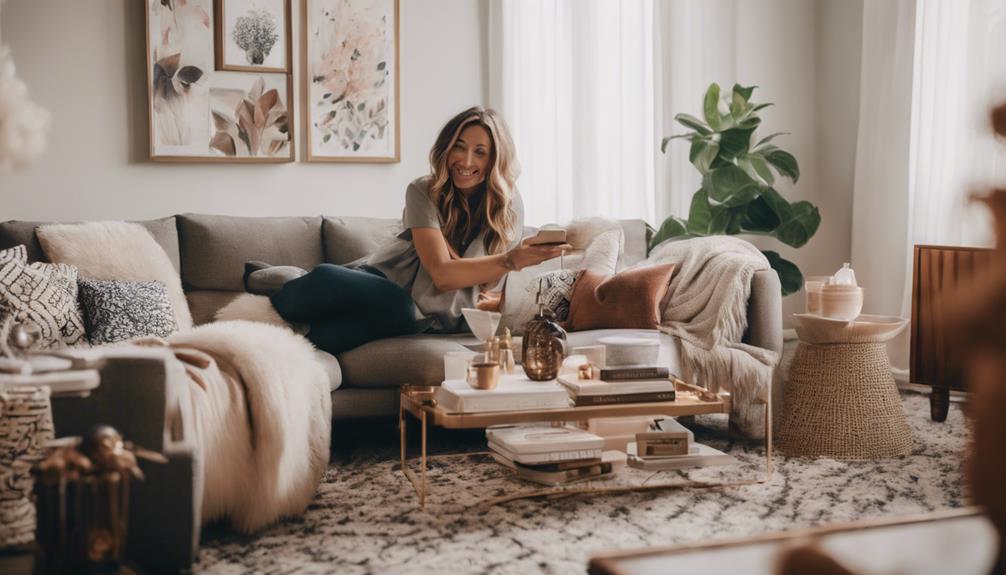
Enhance your blog's presence and reputation by collaborating with brands in the home decor industry to expand your reach and credibility. Partnering with reputable home decor brands not only boosts your blog's visibility but also helps you establish trust with your audience. By showcasing products or collaborating on projects, you can provide valuable content while also opening up new opportunities for growth.
Utilize social media platforms like Instagram and Pinterest to engage with your audience and showcase your home decor expertise. Posting visually appealing content, sharing decor tips, and interacting with followers can help you grow a loyal community around your blog. Additionally, implementing SEO techniques on your blog can improve its visibility on search engines, driving organic traffic and attracting new readers interested in home decor.
| Tips for Growing Your Blog and Brand | |
|---|---|
| Collaborate with home decor brands to expand reach | Engage with audience on social media |
| Offer valuable content to establish authority | Implement SEO techniques for organic traffic |
Conclusion
Now that you've learned the ins and outs of becoming a home decor blogger, it's time to take the plunge and turn your passion into a career!
With dedication and hard work, you can transform your hobby into a thriving business that brings in a flood of followers and a stream of income.
So go ahead, sprinkle some creativity and innovation into your content, and watch your blog soar to new heights like a rocket launching into space.
Good luck!
-

 News4 months ago
News4 months agoYoung Tennis Prodigy Emerges: Merri Kelly Hannity
-

 Lifestyle4 months ago
Lifestyle4 months agoSocial Growth: How to Grow Your Home Decor Instagram Following!
-
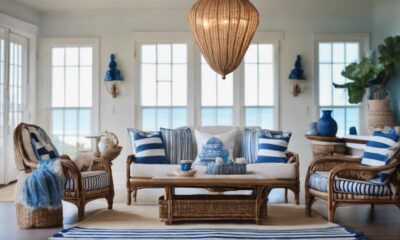
 Vetted4 months ago
Vetted4 months ago15 Best Coastal Home Decor Items to Transform Your Space Into a Seaside Oasis
-

 Vetted1 day ago
Vetted1 day ago15 Best Home Decor Dupes That Look Expensive But Are Budget-Friendly
-

 Lifestyle1 day ago
Lifestyle1 day agoShow Your Love: How to Appreciate Someone's Home Decor in 5 Easy Steps!
-
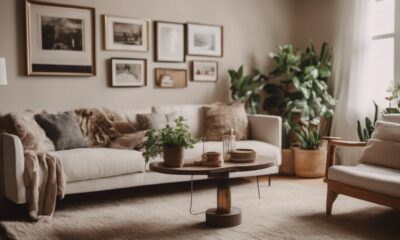
 Lifestyle1 day ago
Lifestyle1 day agoUltimate Guide: How to Arrange Home Decor for a Stunning Look!
-
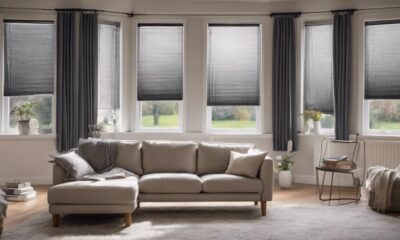
 Lifestyle12 hours ago
Lifestyle12 hours agoDIY Window Treatments: How to Install Home Decor Collection Blinds!
-
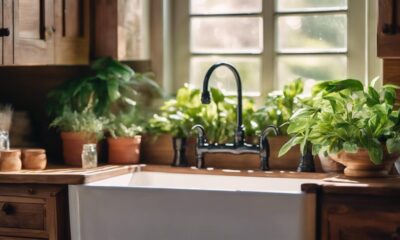
 Vetted4 months ago
Vetted4 months ago15 Best Fireclay Farmhouse Sinks of 2024 – Style Meets Durability








